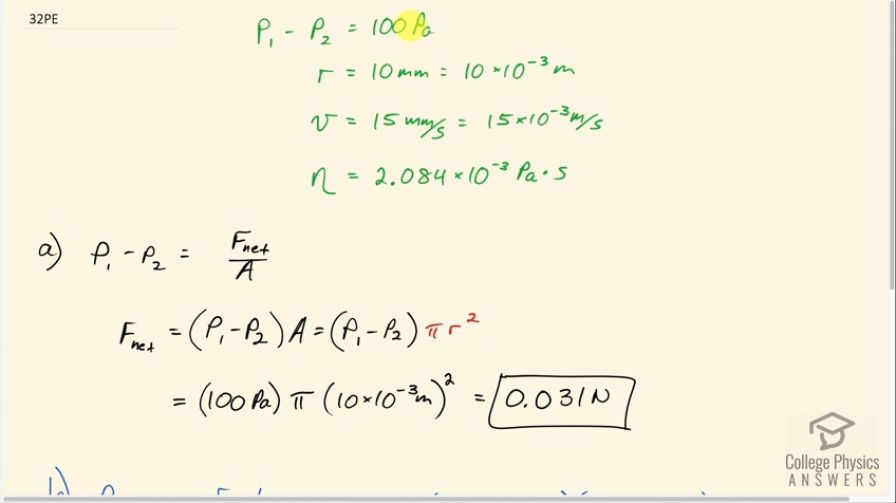Question
The pressure drop along a length of artery is 100 Pa, the radius is 10 mm, and the flow is laminar. The average speed of the blood is 15 mm/s. (a) What is the net force on the blood in this section of artery? (b) What is the power expended maintaining the flow?
Final Answer
Solution video
OpenStax College Physics for AP® Courses, Chapter 12, Problem 32 (Problems & Exercises)

vote with a rating of
votes with an average rating of
.
Calculator Screenshots
Video Transcript
This is College Physics Answers with Shaun Dychko. We have a section of artery with a radius of 10 millimeters that has a pressure drop across a certain section of 100 pascals. And the speed of blood through this section is 15 millimeters per second. And we convert that into 15 times 10 to the minus three meters per second. The radius is converted into meters as well by multiplying by 10 to the minus three. Since that's what the prefix ‘milla’ means. And I also wrote down the viscosity of blood at body temperature 37 degrees Celsius, thinking that that would be needed since I imagined we would use Poiseuille’s law when I first looked at the question, but it turns out it's simpler than that. In part A, we are asked to figure out what forces responsible for pushing the blood through this section of blood vessel. And the pressure difference is that net force divided by the cross sectional area of the blood vessel. And we can multiply both sides by A to solve for F net. So the net force then is the pressure difference times area, which is pi r squared, since it's a capillary or artery and which has a circular cross-section of area pi r squared. And so that's 100 pascals times pi times 10 times 10 to the minus three meters squared, which is 0.031 newtons. Then to find the power. We figure out the work done by the force, which is force times distance and divide that by time, but distance divided by time is the speed. So maybe that should be in red there, substitutions are in red. So we have force then that we found in part A multiplied by the speed of the blood 15 times 10 to the minus three meters per second. And that gives the power of 4.7 times 10 to the minus four watts.
